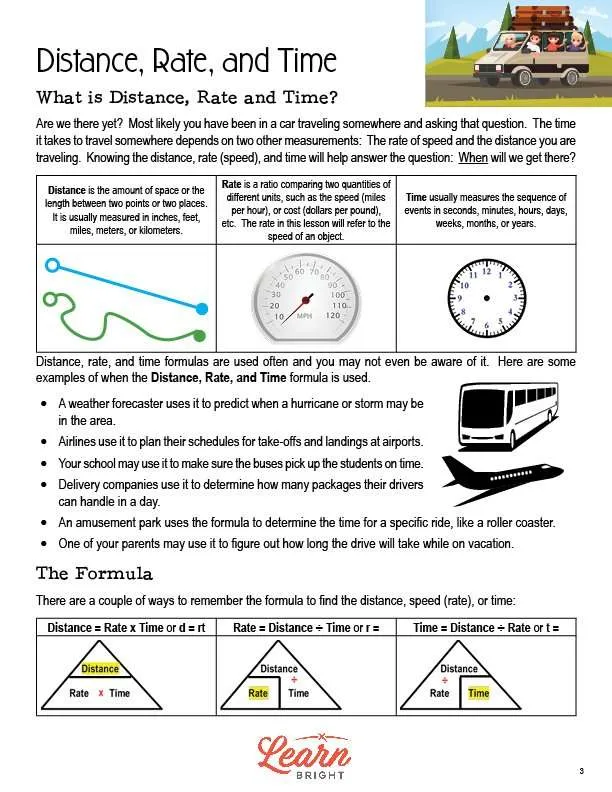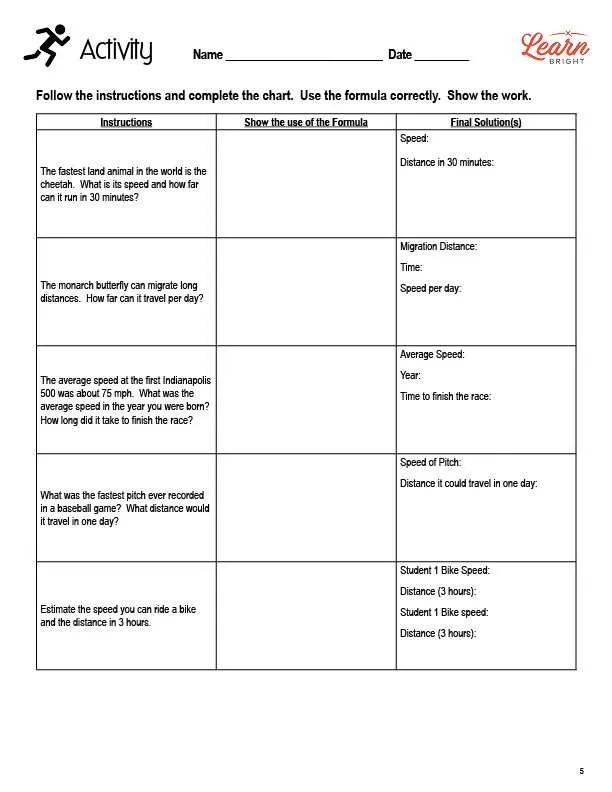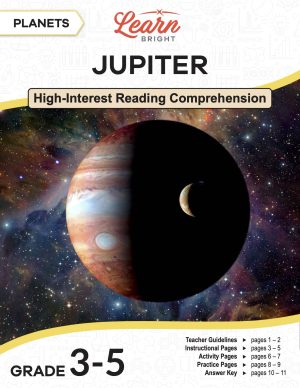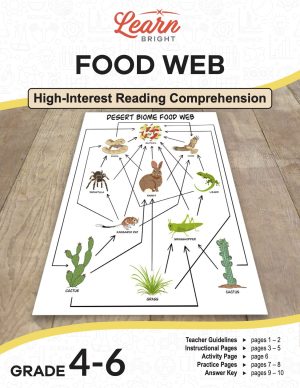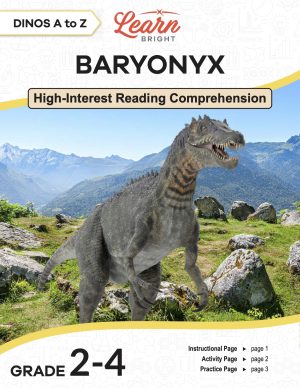Description
What our Distance, Rate, and Time lesson plan includes
Lesson Objectives and Overview: Distance, Rate, and Time lesson plan introduces the formulas for solving distance, rate, and time equations. This hands-on lesson allows students to utilize resources when applying the formula, and leverage group learning as students exchange papers for review. At the end of the lesson, students will be able to identify and use the formula for distance, rate, and time. This lesson is for students in 4th grade, 5th grade, and 6th grade.
Classroom Procedure
Every lesson plan provides you with a classroom procedure page that outlines a step-by-step guide to follow. You do not have to follow the guide exactly. The guide helps you organize the lesson and details when to hand out worksheets. It also lists information in the blue box that you might find useful. You will find the lesson objectives, state standards, and number of class sessions the lesson should take to complete in this area. In addition, it describes the supplies you will need as well as what and how you need to prepare beforehand.
Options for Lesson
Included with this lesson is an “Options for Lesson” section that lists a number of suggestions for activities to add to the lesson or substitutions for the ones already in the lesson. If you’d like to adjust the lesson activity, you can have students work alone. For an additional activity, you could take your students outdoors to participate in several timed events, like running, skipping, and hopping, and have them estimate the distance they could travel in one hour, one day, and so on. Finally, you could have your students create additional distance, time, and rate problems for other students to solve.
Teacher Notes
The teacher notes page includes a paragraph with additional guidelines and things to think about as you begin to plan your lesson. This page also includes lines that you can use to add your own notes as you’re preparing for this lesson.
DISTANCE, RATE, AND TIME LESSON PLAN CONTENT PAGES
What is Distance, Rate, and Time?
The Distance, Rate, and Time lesson plan includes two content pages. When you’re on a road trip, you might wonder when you’re going to reach your destination. The answer to that question depends on two things: the rate of speed you’re traveling at and the distance you need to travel. If you know the the distance, rate (speed), and time, you can answer your question!
Distance is the amount of space or length between two points or places. We usually measure it in inches, feet, miles, meters, or kilometers. Rate is a ratio that compares to quantities of different units, like speed (miles per hour) or cost (dollars per pound). In this lesson, when we talk about rate, we’re talking about the speed of an object. Time measures a sequence of events in seconds, minutes, hours, days, weeks, months, or years.
We use distance, rate, and time formulas often without even being aware of them! The lesson offers a few examples. Weather forecasters use it to predict when a hurricane or storm may be in the area. Airlines and airports use it to plan their take-off and landing schedules. Schools use it to make sure their busses pick students up on time. Delivery companies use it to figure out how many packages their drivers can deliver. There are many more examples as well!
The Formula
You can write the formula three ways, depending on which variable you need to find: Distance = Rate x Time or d = rt, Rate = Distance ÷ Time or r =d/t, and Time = Distance ÷ Rate or t = d/r.
The lesson shows each of these equations as parts of a triangle. Visualizing the formula in this way can help you remember if you need to multiply or divide. In the triangles where the measures are next to each other, you multiply. When they’re on top of each other, you divide.
Using the Formula
The first step in using the formula is to determine what measure you’re trying to find: distance, speed, or time. Once you know that, you can use the right version of the formula, replacing the variables with the figures. The lesson walks students through an example of finding each measure—distance, speed, and time.
Using this formula is as simple as multiplying or dividing. However, it is important to pay attention to the unit that the question is asking for. A problem might give you information in minutes, for example, but want the answer in hours. In that case, you’d have to convert the minutes into hours. Therefore, it’s very important to read each problem thoroughly before solving. And always remember to ask yourself if your answer makes sense!
DISTANCE, RATE, AND TIME LESSON PLAN WORKSHEETS
The Distance, Rate, and Time lesson plan includes three worksheets: an activity worksheet, a practice worksheet, and a homework assignment. You can refer to the guide on the classroom procedure page to determine when to hand out each worksheet.
CHART ACTIVITY WORKSHEET
For the activity worksheet, students will complete the chart shown on the worksheet by using the formula from the lesson to solve word problems.
QUESTIONS PRACTICE WORKSHEET
The practice worksheet asks students to answer 12 questions about the lesson content, testing their understanding of the lesson.
DISTANCE, RATE, AND TIME HOMEWORK ASSIGNMENT
For the homework assignment, students will create six word problems for another student in the class to solve. Two of these problems should be solved for distance, two for speed, and two for time. Each student will also create an answer key for their problems.
Worksheet Answer Keys
This lesson plan includes an answer key for the practice worksheet. If you choose to administer the lesson pages to your students via PDF, you will need to save a new file that omits these pages. Otherwise, you can simply print out the applicable pages and keep these as reference for yourself when grading assignments.



